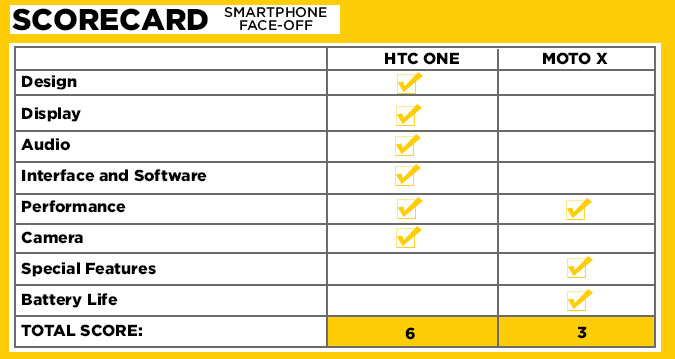Moto X vs HTC One: Smartphone Face-Off
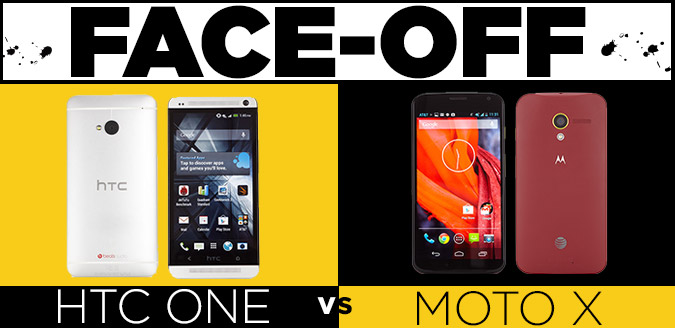
When it comes to Android phones, it’s not all about Samsung’s Galaxies. The Moto X offers a purer Android experience and lets you execute voice commands without even touching the phone. You can also customize your own design online. Meanwhile, the HTC One sports an elegant aluminum design and powerful dual speakers, as well as a unique BlinkFeed interface.
Although both the Moto X and HTC One have the same size 4.7-inch display, they're actually quite different. So which smartphone is best? To find out, we pit the two devices against each other in an eight-round bout to see which one takes the title belt. Let's rumble.
Design
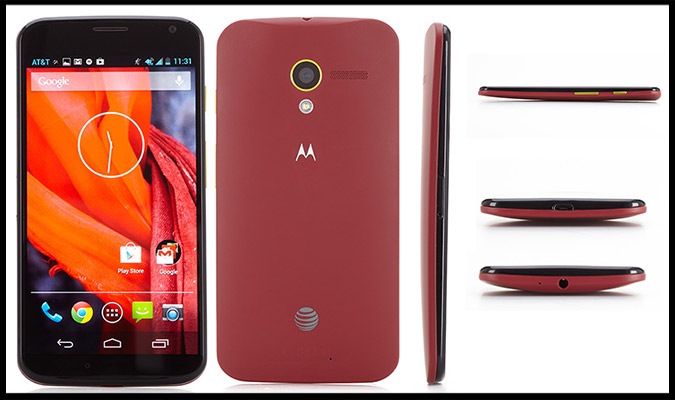
Motorola's Moto Maker service (AT&T only for now) gives consumers the option to customize the color of their handset. Prospective buyers can choose from up to 18 hues for the phone’s back panel, seven accent colors and two front colors to create a smartphone that's truly their own. Otherwise, the Moto X comes in white (with a subtle checkered pattern on the back) or in black. The resin body feels sturdy, but is on the plasticky side compared with the One.
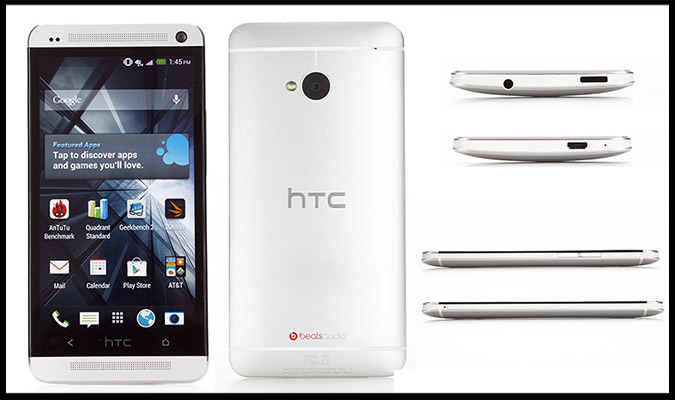
The HTC One is the most attractive Android handset on the market. Period. HTC combined the phone's aluminum chassis with its polycarbonate edges using a technique called zero-gap injection to ensure a seamless bond that also makes the One feel solid. Its power button, situated along its top edge, doubles as an IR blaster for controlling your TV.
MORE: Best Smartphones
Weighing 4.8 ounces and measuring 5.1 x 2.6 x 0.22-0.4 inches, the 4.7-inch Moto X is smaller and lighter than the HTC One, which measures 5.4 x 2.7 x 0.36 inches and weighs a hefty 5 ounces.
Stay in the know with Laptop Mag
Get our in-depth reviews, helpful tips, great deals, and the biggest news stories delivered to your inbox.
Winner: HTC One. Although the Moto X is more compact and offers more customization options, the HTC One is still the best-looking (and best-feeling) Android phone money can buy.
Display
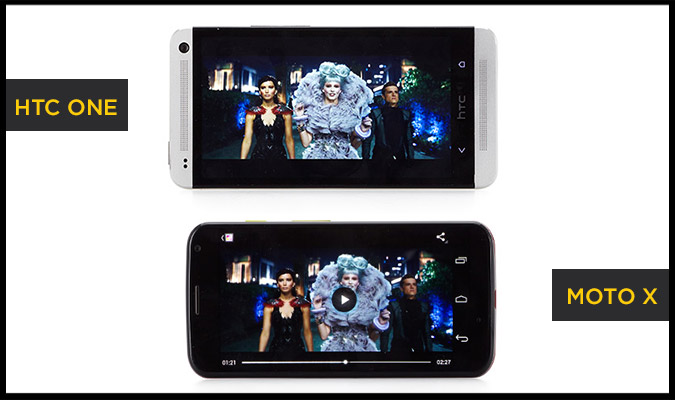
Motorola’s Moto X features a 4.7-inch, 1280 x 720p AMOLED display that produces gorgeous colors, but it doesn’t provide as much detail as the One’s 1920 x 1080 Super LCD3 screen. While watching a trailer for “The Hunger Games: Catching Fire,” we noted that colors had a slight yellowish hue. Details such as the lines in Philip Seymour Hoffman’s face were slightly blurred, though mostly visible.
At 482 lux, the Moto X’s display is brighter than the smartphone category average of 403 lux, as well as the HTC One’s rating of 433 lux. However, we had no problem viewing content on either screen outdoors in direct sunlight. Viewing angles on both handsets were excellent.
Winner: HTC One. The Moto X’s display is brighter and offers more saturated colors, but the HTC One’s screen is sharper and produces more accurate hues.
MORE: Best & Worst Smartphone Brands 2013
Audio
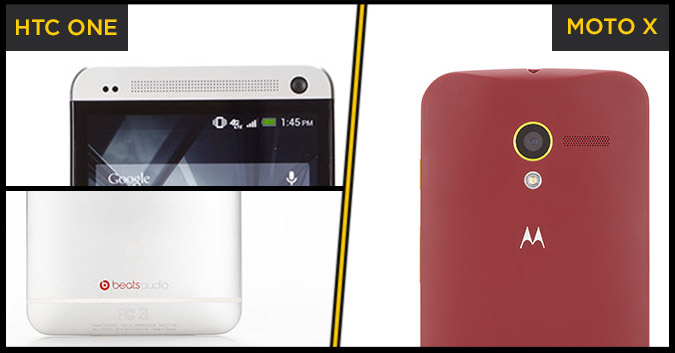
Motorola strapped the Moto X with a single rear speaker that can blast out enough sound to fill a conference room. When pushed to its limit, though, the speaker produced grating, distorted audio. Though sound at medium volume was fairly accurate, audio quality suffered when multiple layers came together in the chorus of Coheed and Cambria’s “Mothers of Men.”
Audio is a major component of the HTC One. Not only does the handset pack two front-facing BoomSound speakers, it comes loaded with Beats Audio software. The combination of the two help the One produce the clearest, deepest audio of any smartphone. Bass hits on Coheed and Cambria’s “Mothers of Men” were deep, and individual instruments were easy to make out during the chorus. You may not even need an external speaker when rocking out at home or on the road.
Winner: HTC One. With its BoomSound speakers and Beats Audio software, the HTC One offers the best audio of any smartphone on the market.
Interface and Software
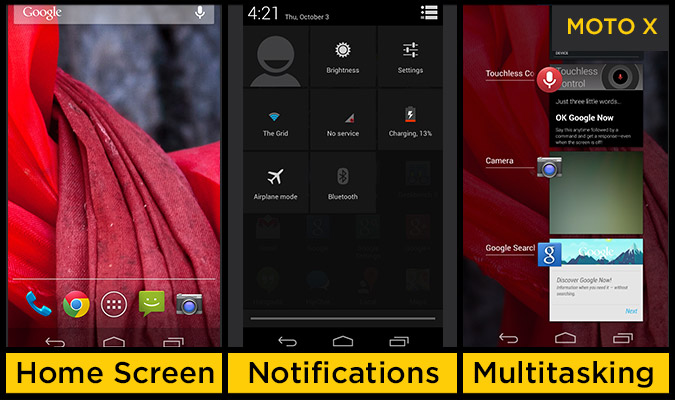
The Moto X offers a nearly stock Android 4.2.2 experience. There’s no special UI overlay here. Everything from the lock screen to the apps drawer is pure Android. You get five home screens and five customizable omnipresent shortcuts to the Phone, Chrome, apps drawer, Messages and Camera apps at the bottom of the screen.
Swiping down from the screen with one finger shows the notification drawer. Two-finger swiping reveals various shortcuts, including Brightness, Airplane Mode, Bluetooth, Wi-Fi and Settings. Multitasking on the Moto X is as easy as tapping the recent apps button and choosing the one you want to open.
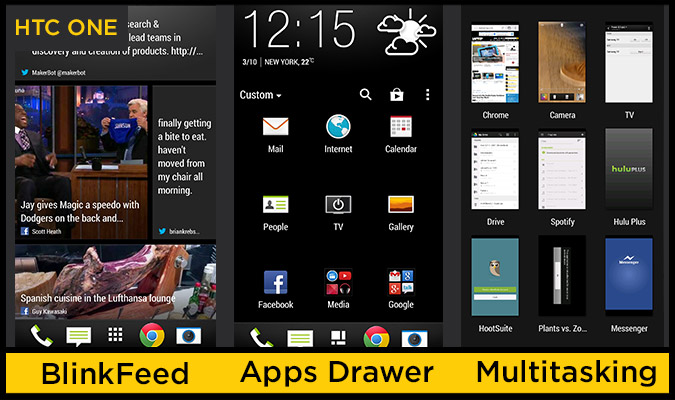
The HTC One’s Sense 5.0 overlay adds style and functionality to the Android OS. The first thing you notice is the handset’s BlinkFeed feature, which provides a continuous flow of news and social updates via a series of asymmetrical panels that are reminiscent of Windows Phone. If BlinkFeed is too busy for you, you can always relegate to this to a secondary screen.
The One’s apps drawer gives users the option to view apps in either a 3 x 4 or 4 x 5 grid. We also appreciated the time and weather widgets located above the apps drawer, and the shortcuts for the Play Store and Search.
MORE: 12 Worst Android Annoyances and How to Fix Them
Unlike the Moto X, the HTC One also allows users to customize the lock screen so you can unlock to any app you want. Since the One lacks a recent apps button, you’ll have to double-tap the Home button to see which apps are running. While a slight inconvenience, the One displays more apps at once in a grid layout, while the Moto X presents them in a vertical list.
Winner: HTC One. Though Android purists may feel differently, we prefer the One’s BlinkFeed home screen and more lock screen shortcuts to the Moto X's stock Android experience.
Performance
The Moto X’s 1.7-GHz dual-core Snapdragon S4 Pro CPU isn’t the fastest CPU around, but Motorola has augmented it with its X8 Mobile Computing System, adding processors for contextual computing and natural language recognition. The HTC One packs a 1.7-GHz quad-core Snapdragon 600 chip.
During everyday use, the Moto X proved speedy, with apps opening and closing in the blink of an eye. Both handsets changed screen orientation just as quickly in the Chrome app. The Moto X opened its camera app in just 1 second, while the HTC One opened its camera app in 3 seconds. The slight difference could be a result of the additional features HTC included with its app. The Moto X, by comparison, has a simpler camera interface.
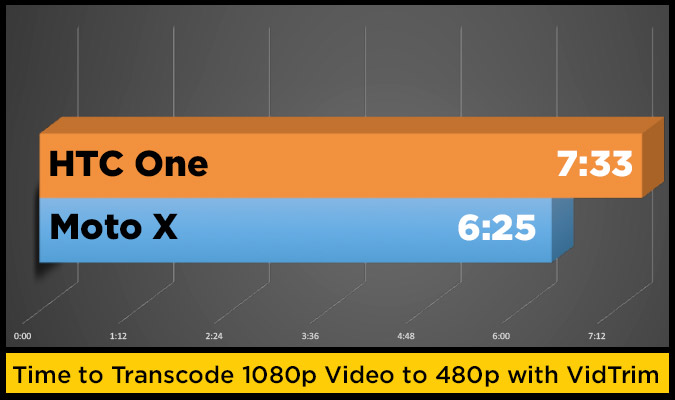
The Moto X transcoded a 204MB 1080p video file to 480p in 6 minutes and 25 seconds using the VidTrim app. That’s faster than the category average of 7:47, as well as the HTC One’s time of 7:33. The X also opened apps faster than the HTC One, taking just 12 seconds to load N.O.V.A. 3 to the One’s 18 seconds.
MORE: 5 Ways to Speed Up Your Android Phone in Under 5 Minutes
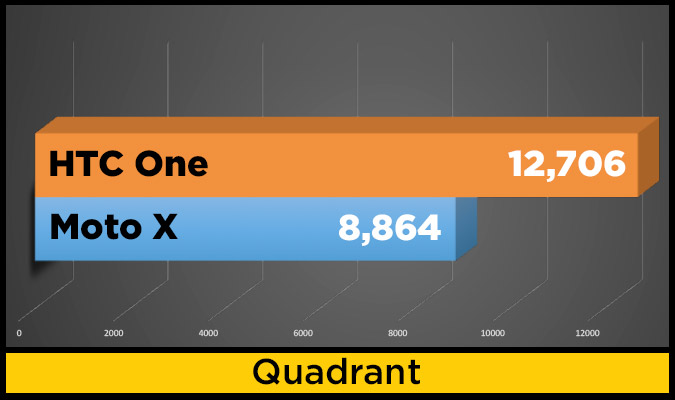
When it came to benchmarks, however, the Moto X was no match for the HTC One’s quad-core Snapdragon 600 CPU. The One scored a 12,706 on the Quadrant test, crushing the category average of 6,755, as well as the Moto X’s score of 8,864.
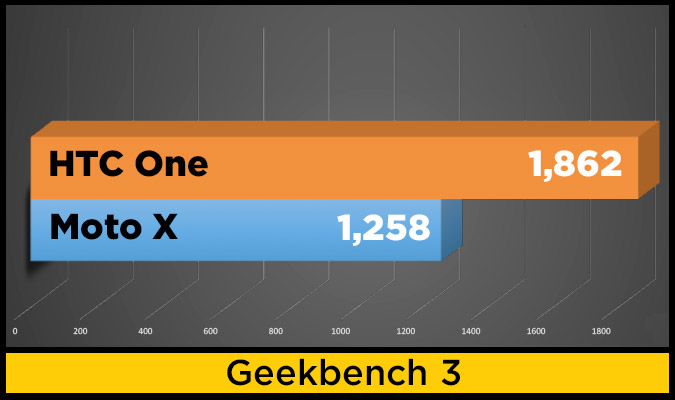
We saw similar results on the Geekbench 3 test, with the Moto X scoring 1,258 on the multicore section, slightly below the category average. The HTC One topped out at an impressive 1,862.
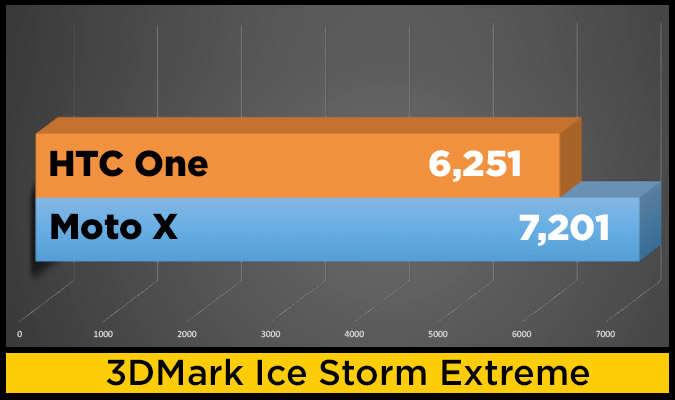
On the 3DMark Ice Storm Extreme benchmark, the Moto X scored 7,201, while the HTC One notched 6,251. So at least when it comes to graphics performance, the Motorola comes out on top.
Winner: Draw. The HTC One has a quad-core processor, but the Moto X still manages to hang with and — in some cases, even surpass — the One. And while the One wins out in most benchmark tests, its victories come with a potential caveat. HTC is one of several companies accused of artificially boosting their devices' performance on benchmarking tests. Motorola, on the other hand, has not been included in that discussion.
Camera
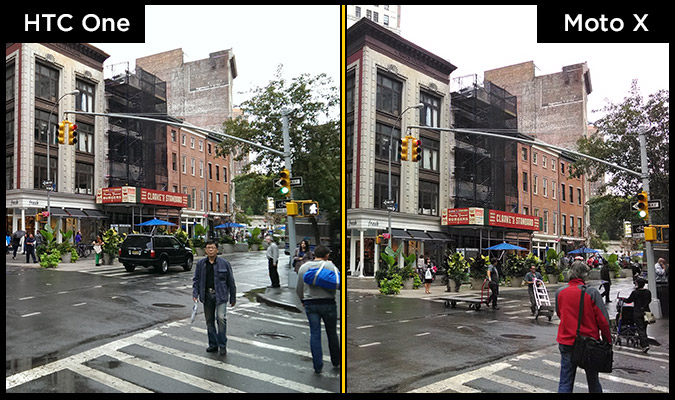
Motorola equipped the Moto X with a 10-megapixel camera and its Clear Pixel technology, which the company says helps the shooter capture up to 75 percent more light than other cameras. Combine that with an f2.4 aperture and the Moto X is capable of shooting great photos. Meanwhile, the HTC One uses a 4-megapixel Ultrapixel camera with a f/2.0 aperture lens to capture 300 percent more light.
Since their releases, both the One and Moto X have received software updates meant to improve camera performance. To ensure our testing was accurate, we made sure both updates were installed. Our first outdoor photo of a New York City street was fairly similar across the two phones, with both devices delivering a good mix of color and detail.
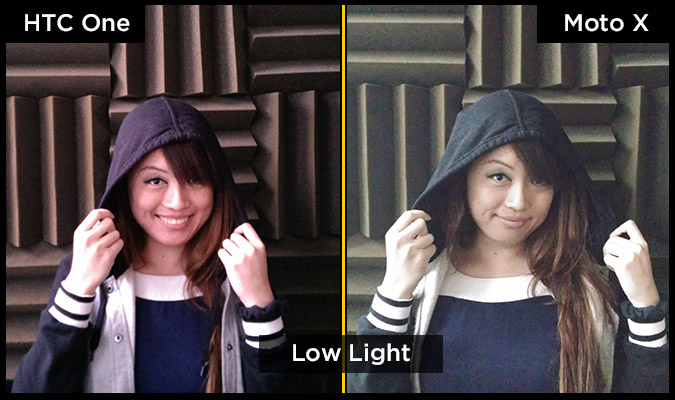
Taken at the same time in the same room, the HTC One delivered a much better looking photo of our colleague, with plenty of contrast. The Moto X's show looks washed out by comparison, and this photo was taken after Motorola issued an update for its camera software.
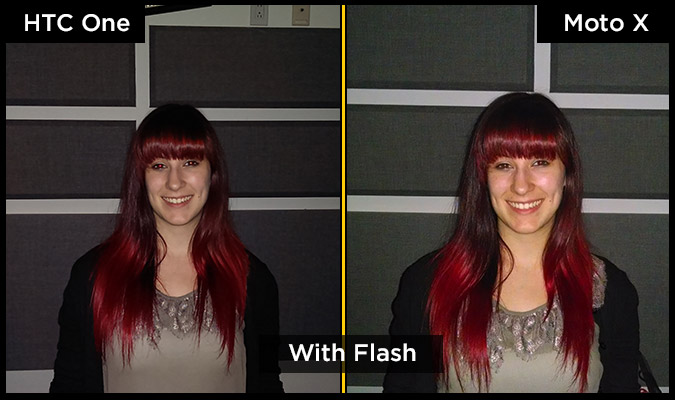
In our flash test, the HTC One produced a dimmer image with a reddish hue. The Moto X shot looked brighter but had a greener tinge. We'd give a slight edge to the Motorola here.
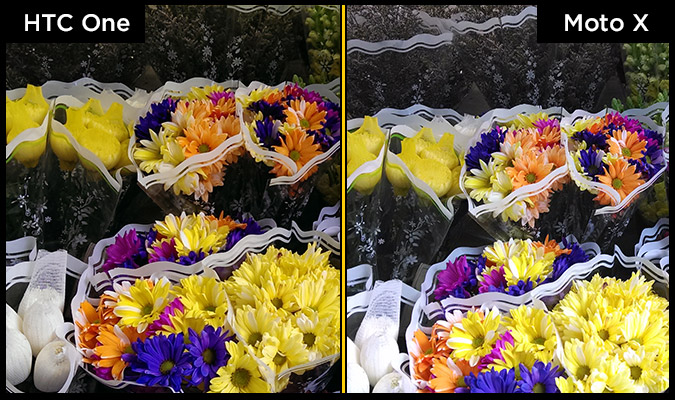
A photo of a flower stand taken with the HTC One looked gorgeous, with the various purples, greens, yellows and reds blending to form a tapestry of color. The Moto X' photo looked more washed out.
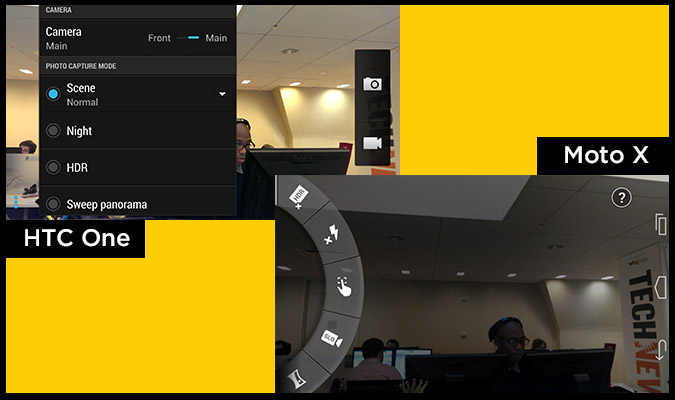
Since the Moto X comes loaded with a nearly stock version of Android, its camera is relatively light on features. Shooting modes are limited to Flash, Geo-Tag, Tap to Focus, HDR, Panorama and Slow Motion Video. The Moto X’s quick launch feature lets you open the camera app even when the phone is in Sleep Mode with two quick flicks of your wrist.
MORE: Smartphone Camera Shootout 2013
The HTC One offers a lot more camera features, including multiple image filters, face detection, auto smile capture, continuous shooting and a host of other options. The Zoe feature lets you capture 20 photos and 3 seconds of video at the same time, making it easy to share moving pictures, remove unwanted objects from photos and create sequence shots.
Winner: HTC One. The HTC One has more camera features and captures better images, while the Moto X's photos look slightly blown out in some instances.
Special Features
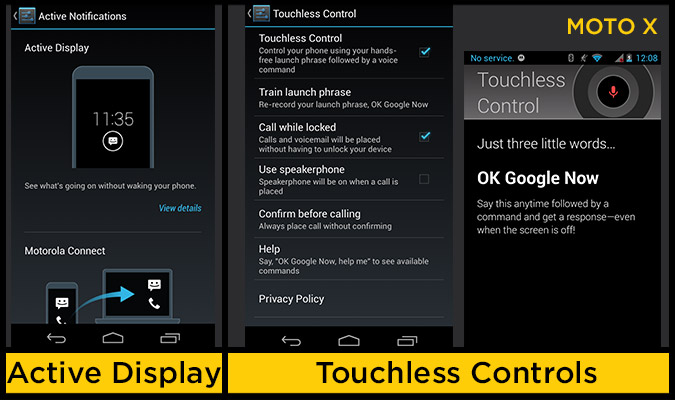
Two of the Moto X’s biggest software features are its Active Display and Touchless Controls. Active Display provides a quick look at the time and your latest notifications via the Moto X’s display whenever you pick up the phone or pull it out of your pocket. If you receive a text message, for example, the Messages icon will appear on the screen. Swiping up will take you to the app corresponding to the alert.
Touchless Controls takes advantage of the Moto X’s natural language processor, allowing you to issue up to 60 commands to the handset using only your voice. The feature can be activated from several feet away by saying, “Okay, Google Now,” followed by your command. From there, you can perform various tasks, including opening apps, changing settings and placing calls. We also asked questions such as the height of the Empire State Building, to which the handset accurately replied, “1,454 feet.”
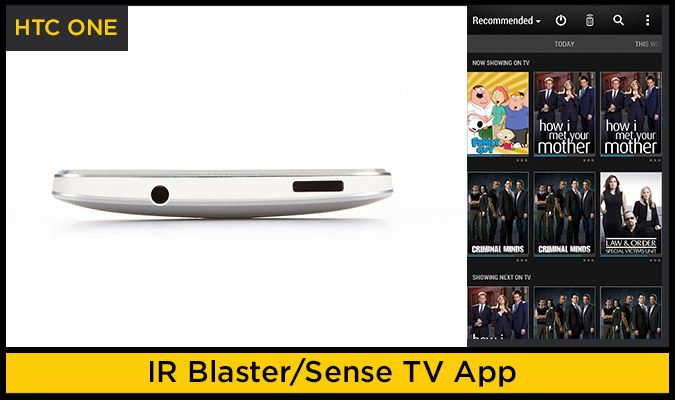
The HTC One isn’t just a smartphone; it’s also a remote. Using the IR Blaster built into the phone’s power button and Sense TV app, you can control everything from your television or cable box to your Blu-ray player and stereo. You can also program the Sense TV app to remember your favorite shows, recommend new programs, and see what your friends are watching. The app’s intuitive interface makes finding shows a breeze.
Winner: Moto X. While the HTC One’s IR blaster and Sense TV app are practical, the Moto X’s Active Display and Touchless Control are more compelling.
Battery Life
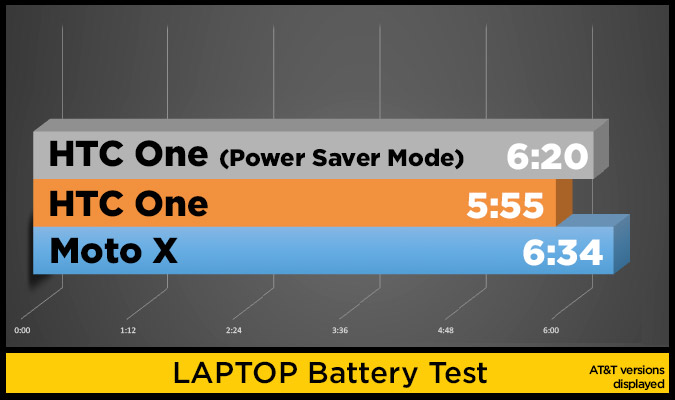
The Moto X has a relatively small 2,200-mAh battery, but it has pretty good staying power. The AT&T version of the phone lasted 6 hours and 34 minutes on the LAPTOP Battery Test, which includes continuous Web surfing over 4G LTE with the display set to 40 percent brightness. That’s slightly longer than the smartphone category average of 6:25.
The HTC One’s 2,500 mAh nonremovable battery fared worse, as the AT&T model lasted just 5 hours and 55 minutes on our LAPTOP Battery Test. With its Power Saver Mode active, the One mustered a runtime of 6:20, just below the Moto X’s time.
MORE: 10 Smartphones with the Longest Battery Life
On Verizon’s network, the Moto X lasted 6:13, compared with 5:44 for the HTC One in RegularMmode.
Winner: Moto X. Despite its smaller battery, the Moto X lasts longer on a charge than the HTC One.
Overall Winner
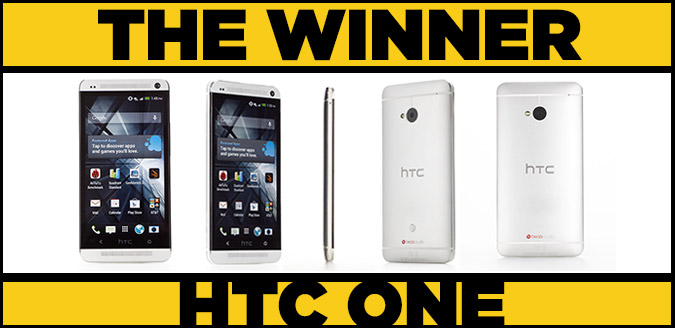
HTC One. The HTC One took 5 out of 8 rounds in this contest and tied the Moto X in performance, making it the overall winner. The One offers a more premium design, sharper display and much better audio quality. Plus, it captured better looking photos. HTC’s Sense interface isn’t for everyone, but there's more flexibility in the UI than with Motorola's mostly stock interface.
There are some reasons to get the Moto X instead of the HTC One. It offers a more compact design, convenient touchless voice controls and the ability to customize your design (just AT&T for now). The Moto X is also the phone to get if you hate any sort of Android skins. Overall, though, the HTC One is the better of these two smartphones.
